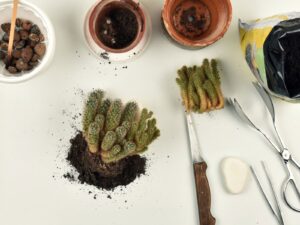Propagating Aloe from Cuttings: How to Grow Aloe Vera from Cuttings
As the allure of succulent plants swells within indoor gardening realms, many enthusiasts find themselves captivated by the velvety leaves and medicinal benefits of Aloe Vera. This desirable houseplant naturally lends itself to propagation, allowing you to cultivate new plants with relative ease from existing ones. Among various propagation methods, growing Aloe Vera from cuttings is a straightforward and rewarding venture. This article unearths the bare essentials, intricacies, and nuances of this process, transforming the perspective on how one engages with Aloe Vera.
Understanding Aloe Vera: The Plant’s Distinct Characteristics
Before delving into the propagating process, it’s essential to recognize the characteristics that make Aloe Vera unique. Aloe Vera is a succulent plant species, recognized not only for its striking appearance but also for its adaptability to various environments. The plant typically features thick, fleshy leaves that store water, a feature that enables it to thrive in arid conditions. The stems are usually short, and the plant can grow up to approximately two feet in height. Moreover, its ability to produce offsets or “pups” organically presents an opportunity for natural propagation. Yet, when focusing on cuttings, it is vital to understand how to select the right portion of the plant for optimal growth.
Choosing the Right Cutting: Ensuring Health and Vitality
To promote successful propagation, selecting the correct cutting is paramount. The ideal cutting should come from a healthy, mature Aloe Vera plant, embodying resilience. Following these criteria ensures that the cutting possesses the necessary vigor to establish roots and flourish independently. Look for healthy leaves that are plump and robust.
When obtaining a cutting, it’s advisable to take a stem segment or a leaf that is at least four to six inches in length. Avoid any discolored or damaged leaves, as these may compromise the rooting process. Lastly, cutting at a 45-degree angle using a sterile, sharp knife minimizes the chances of introducing pathogens into the plant and optimizes the surface area for root development.
Preparing the Cutting: A Step-By-Step Approach
Once you have selected a healthy cutting, the nurturing phase begins. The initial step involves allowing the cutting to callus. This is a crucial process, as it prevents the cutting from rotting when introduced into the soil. Set the cutting in a dry location, away from direct sunlight, for approximately three days. During this period, a protective callous forms over the cut surface.
While waiting, consider the soil medium. A well-draining potting mix is essential to ensure excess moisture does not accumulate. A mixture of cactus soil, sand, and perlite creates an environment that emulates the cutting’s natural habitat, enhancing its chances for successful root establishment.
After the callusing period, it’s time to plant the cutting. Make a small hole in the potting mix with your finger or a pencil, and place the cutting in the hole without burying it too deep. Lightly pack the soil around the cutting to provide stability.
Watering should be minimal at this stage. A gentle misting is usually adequate to provide initial moisture without saturating the soil. Overwatering can lead to various issues, including root rot, which poses a severe risk to the cutting’s survival.
Caring for Your Cutting: Nurturing Growth
Once your Aloe Vera cutting is in the soil, the journey towards a new plant truly begins. Position the potted cutting in an area that receives bright, indirect sunlight. Exposure to direct sunlight can be too harsh for a newly planted cutting, potentially causing damage. Ideally, a south-facing window or similar location offers ample light while protecting against scorching heat.
Keeping the atmosphere warm, ideally between 70-80°F (21-27°C), fosters a conducive environment for rooting.
Patience becomes a tremendous virtue during this stage. Roots typically begin to develop within 2-4 weeks, and discerning growth takes time. During this period, limit watering to every few weeks, allowing the soil to dry out completely between waterings. This sporadic watering schedule encourages the plant’s roots to explore the soil, ultimately leading to a more robust and established plant.
The Transformation: When and How to Transplant
Recognizing when your Aloe Vera cutting is ready for transplanting is another critical aspect of the propagation journey. Signs of root development manifest as new leaf growth or increased firmness in the soil. Once the roots are firmly established, you can consider moving the plant to a larger pot to accommodate its growth.
Select a pot that provides adequate drainage holes to prevent water accumulation, a recurrent peril for succulents. Utilize a similar well-draining soil mix as before. During this transition, handle the young Aloe Vera with care, as its roots will still be delicate.
Soon enough, your once humble cutting will evolve into a thriving Aloe Vera plant that can be cared for and enjoyed. Whether using the leaves for soothing topical applications or simply enjoying its aesthetic appeal, the satisfaction gained from propagating Aloe Vera from cuttings is profoundly gratifying.
In summation, propagating Aloe Vera from cuttings embodies a blend of art and science, unlocking the door to a gratifying horticultural practice. By understanding the plant’s unique characteristics, selecting appropriate cuttings, and nurturing them through the various stages of growth, you can embrace the rewarding experience of cultivating Aloe Vera in your own home. The prospect of nurturing life from a simple cutting reframes our relationship with nature, urging us to engage with the world around us in a deeper, more meaningful manner.





Leave a Comment